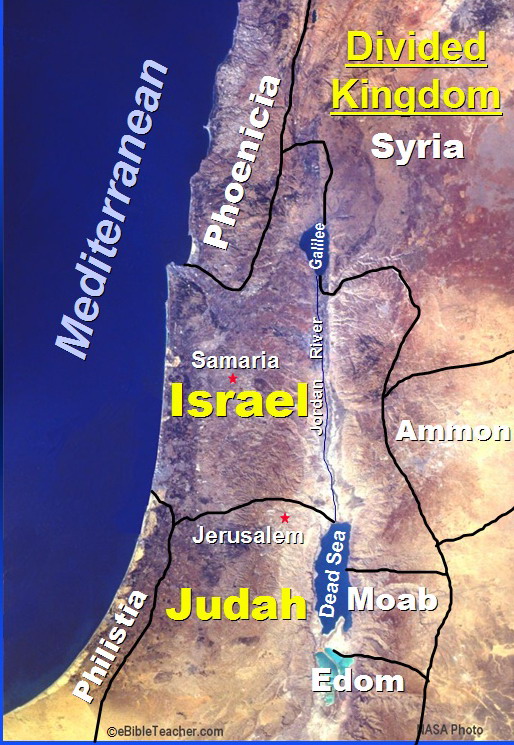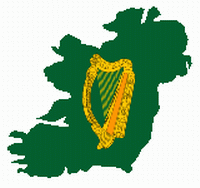|
The Brit-Am Rose |
|
The Brit-Am Rose |
|
Brit-Am Discussion Group |
Contents by Subject |
Research Revelation Reconciliation Contribute |
|
Site Map Contents in Alphabetical Order |
This Site |
(1) Extract OneIn our opinion the Brit-Am explanation and summarization of the subject is still the best available.
THE REAL DIASPORA
(THE MYSTERY OF THE MISSING BIBLE TRIBES!)
http://www.ensignmessage.com/archives/diaspora.htmlIn the second row of carvings, Kinsmen of Jehu, son of a man named KHUMRI, are shown bringing tribute consisting of metal and vessels of silver and gold.. KHUMRI was the Assyrian designation of the Jews... This monument of the Assyrian king has pictures of conquered princes paying tribute, including "Jehu, the son of Khumri," a term designating him as an Israelite. This Assyrian name for Israel, Khumri, translates as "House of Omri," after an Israelite king who gained fame for a new law-code he developed (Micah 6:16). Famed early 20th century historian archaeologist, Archibald Henry Sayce, in his book, Higher Critics and the Monuments, p. 396, adds: 'lt was, however, in the lime of Ahab the son of Omri that the Assyrians first became acquainted with the northern kingdom of lsrael, and consequently Samaria continued ever afterwards to be known to them as Beth-Omri, the 'house of Omri'. "
KHUMRI
Scholars confirm that the people known to the Persians as SAKA, to the Babylonians as GIMIRRI, and to the Assyrians as KHUMRI, were but different names for the Lost Ten Tribes in captivity. "Saka" or "Sacae" meant "House of Isaac," while the terms "Khumri" and "Gimirri" translate as "House of Omri." (The Assyrians later also adopted the Babylonian variant of Khumri, Gimirr.) From this word Khumri or Gimirri developed the tribal name, "Cimmerian," as well. The famed ancient writer, Herodotus, visited these tribes about 450 B.C. Sir Henry Rawlinson, decipherer of the Behistun Rock, informs us that, "We have reasonable grounds for regarding the GIMIRRI, or CIMMERIANS, who first appeared on the confines of Assyria and Media in the seventh century B.C., and the SACAE of the Behistun Rock, nearly two centuries later, as identical with the BETH-KHUMREE of Samaria, or the Ten Tribes of the House of lsrael... "' George Rawlinson, translator of the History Of Herodotus, stated, "The SACAE or Scythians, who were termed GIMIRRI by their Semitic neighbours, first appear in the cuneiform inscriptions as a substantive people under Esar-Haddon in about B.C. 684." By this date the Ten Tribes, Israel-Gimirri, were entirely resident in Assyria, for a great deportation of the whole seed of Ephraim (Jer. 7:15) had removed them from Palestine. We read . ..... "there was none left but the tribe of Judah only ... so was Israel carried away out of their own land to Assyria unto this day." (2 Ki. 17:18,23).
(2) Adaptation of Extract 2.
From
"Lost Israelite Identity. The Hebrew Ancestry of Celtic Races".
The exile of all Israel from the northern Galilee is recorded in an inscription of Tiglathpileser who boasts of exiling all of "Bit Khumria" except for a small remnant which he left around the city of Samaria6 which city was then the capital and had been built by King Omri. "Bit Khumria" was the name which the Assyrians gave to northern Israel presumably in remembrance of King Omri ("Khumri" in Assyrian) whose son Achab had once fought and defeated the Assyrian forces7.
The Gimirae were also to become known as Gamira, Kimmeroi, and Cimmerians; the appellations Cymry and Cimbri are also derived from the same root. In the east Caucasus area the Humri River is also called the River Gumri and may have been named after the Cimmerians.
The Cimmerians proper were to be driven out of the Middle East and to make their way to western Europe. Forms of their name or root words derived from it are: Cymree, Cimbri, Camber, Humber, Hammer, Himmer, and so on. It has been suggested (quite frequently) that the name Gimirae together with its derivatives are a form of the Hebrew "OMRI" which was pronounced by the Assyrians something like KHUMRI. The Assyrians used "Omri" (i.e. "Khumri") as a name encompassing all of the kingdom of ten tribed northern Israel. Omri had been only one of the kings of northern Israel but his name was used by the Assyrians for all of his kingdom for several generations after his demise. The suggested permutation of "Khumri" (Omri) into Gimirae is actually linguistically quite feasible. Parallel cases of permutations of other words beginning (like "OMRI") with the Hebrew letter AYIN and eventually being pronounced in the Assyrian sphere as "G" are known. Even so, that "Khumri" (Omri) eventually really did become "Gimirae " has yet to be proven and does not really need to be since stronger more confirmable proofs are readily at hand.
Micah (6:15) condemns the northern Israelites for keeping the "Statutes of Omri". "OMRI" begins with an AYIN which as enunciated has no exact equivalent in European tongues and is variously transliterated as "H" ("Hebrew"), "O" ("Omri"), "A" ("Anamim"), "G" ("Gaza"), etc. The Arabs today have a form of AYIN which transliterated into English would be rendered as "G" and does have a "g"-like sound. The northern Israelites like the Phoenicians (whose dialect of Hebrew was similar to theirs probably did not pronounce "Ayin" clearly. The Assyrians used a special symbol called "KHETH" for all gutturals including Ayin so that Omri became pronounced as Khumri. The Akkadian languages which the Assyrians used had a tendency to exchange a simple "K" for the "KHETH" ("KH") and also "G" for "K" so therefore Omri (Khumri) could have become Gimirae.
Some authorities, such as Pinches, seem certain that the actual pronunciation (by both the Northern Hebrews and by the Assyrians) of "Omri" (the name applied to Israel) was at least quite close to Gimiri, e.g. T.G. Pinches "Omri was likewise pronounced in accordance with the older system, before the ghain became ayin. Humri shows that they said at that time `Ghomri'" : "Ghomri" in Assyrian speech would easily have been renderable as "Gimirae" the name given to the Cimmerians.
Kristensen, in her work (Anne Katrine Gade KRISTENSEN, "Who were the Cimmerians, and where did they come from?", translated from the Danish by Jorgen Laessoe. Copenhagen, 1988)
(also milled over this subject, as for example in the following quotation:
~The Cimmerians are referred to as "Gimiraja", "Gamiraaja", "Gamir", and "Gamirra".
~ When 'Omri could be rendered as "~Humri", then according to Pinches it shows that at the time the name was pronounced `Ghomri, in accordance with the older system before ghain became ayin'.
~In as much as the Assyrians...had to represent it by a character which may be transliterated Kh, Gh, or H, according to choice.
~It may be taken for granted that there is a linguistic relationship between 'Omri and the term used for the Cimmerians...
"Cf. also the Armenian name for northern Gamir in the vicinity of Leninakan: Kumayri (Later Gumri) (Kristensen p.121 n.419; [suggests the transition from "Khumri" to "Gumri"..]:
~The arguments adduced by the students of the Ten Tribes amounts to the possibility that there may have been two different ways in which the Assyrians attempted to render the Hebrew 'Omri. Incidentally, the Hebrew word for Cimmerians, Gomer, appears to be rather close to the older form, Omri.
In the past a whole string of writers identified the Lost Ten Tribes with the Cimmerians and the Cimmerians with West European groups especially with the Celts or at least with part of them. Kristensen openly accepts the British Israelite equation of Omri with Gimiri and she is probably one of the few recognised academic scholars to do so.
"The philological connection between 'Omri and "Gimiri" has been so conclusive to the students of the Ten Tribes...everywhere in the works of these scholars, in spite of an apparent lack of petty criticism of sources, we find results and conclusions which will turn out to be of invaluable importance for professional historians..particularly if we would go to the trouble of checking the premises on which the conclusions rest. The perspectives which are laid open, and the insight and intuition displayed by these scholars, are truly remarkable".
We would add to the above:
We have indicated additional reasons for accepting the possibility of a transmutation of Omri (Khumri) to Gimiri. It now seems undoubted that such a possibility exists and in one way or another is mentioned and exemplified in quite a few sources. NEVERTHELESS, even if the two names were identically the same (without the need to explain how one turned into the other), it would not be sufficient in itself. Despite everything the whole equation still contains an element of uncertainty. The alternate explanation that the exiled Israelites combined with elements from another entity called GOMER is more compatible with all of the facts rather than the idea of a one to one complete identity of Gomer (Gimira) with Israel. The suggested combination may have been accompanied by a similarity of name and historical parallels for such a "coincidence" are known.
| After the Death of Solomon: The Divided Kingdom  Source of Map: www.ebibleteacher.com/imagehtml/otmaps.html |
 1-Kings ch.15 |
1-Kings Contents |
1-Kings ch.17  |